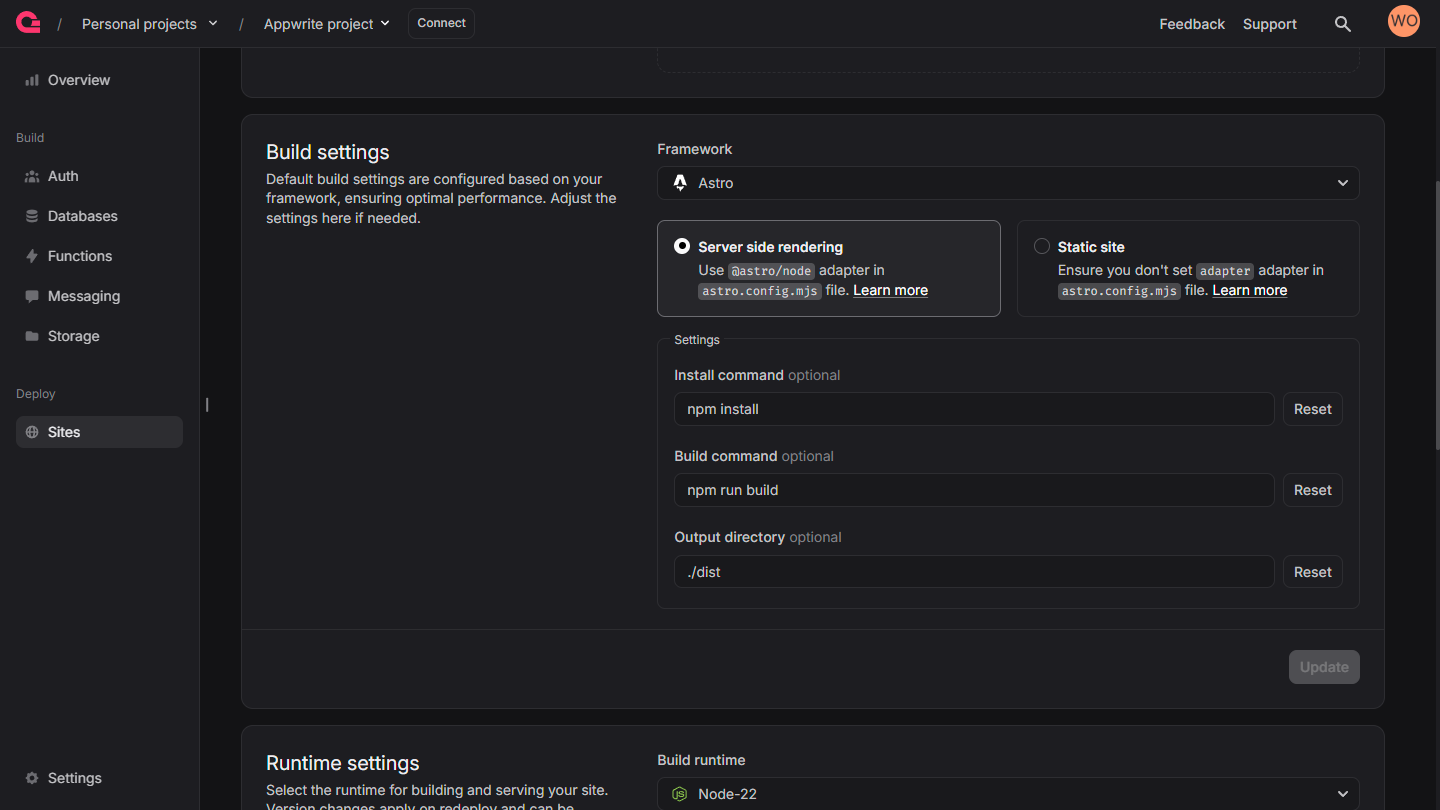Server Side Rendering (SSR) apps generate HTML content dynamically on the server for each request and send fully rendered pages to the browser. This approach improves performance for the initial load and enhances SEO since search engines can easily index the content. While SSR can be slightly slower than static apps due to server-side processing, it provides a good balance between performance and interactivity.
Since Appwrite's CDN supports dynamic content delivery, any server-side processing implemented in your site will be executed at your user's nearest edge location. The CDN also uses advanced compression algorithms to reduce data transfer sizes and improve delivery times of your site content. Any data relevant to other Appwrite products that you have integrated in your site, such as Auth, Databases, Storage, Functions, and Messaging, will be served from your project's pre-selected region.
Configuring your Appwrite Site to use SSR
When Appwrite builds your site for the first time, it scans your project's configuration files to determine whether the website should be rendered as static pages or using SSR.
If you need to manually update these settings, here are the steps to do so:
- Navigate to your site in the Appwrite Console and head to the Settings tab > Build settings section
- Select the Server side rendering checkbox (you may need to update your project codebase depending on your framework option)
- Confirm that the appropriate install command, build command, and output directory are set
- Click on the Update button and redeploy your site


Enabling SSR builds on your web app
To enable SSR builds for your web app, you may need to make some additional updates in case of the following frameworks:
Set ssr: true in analog plugin in the vite.config.ts file.
Ensure the src/server.ts file uses @angular/ssr/node package.
Ensure you don't set output in the next.config.js.
Set build command to npm run build in site settings.
Use @sveltejs/adapter-node adapter in the svelte.config.js file.
Use @astrojs/node adapter in the astro.config.mjs file.
Ensure the entry.server.tsx file uses @remix-run/node package.
No additional configuration is needed as SSR is enabled by default.
Appwrite-specific environment variables
You can access several environment variables pertaining to your Appwrite project in SSR apps.
| Variable | Description | Available at Build and/or Run Time |
APPWRITE_SITE_API_ENDPOINT | The API endpoint of the running site | Both |
APPWRITE_SITE_NAME | The name of the running site. | Both |
APPWRITE_SITE_DEPLOYMENT | The deployment ID of the running sites. | Both |
APPWRITE_SITE_PROJECT_ID | The project ID of the running site. | Both |
APPWRITE_SITE_RUNTIME_NAME | The runtime name of the running site. | Both |
APPWRITE_SITE_RUNTIME_VERSION | The runtime version of the running site. | Both |
APPWRITE_SITE_CPUS | The CPU (runtime) specification of the running site. | Both |
APPWRITE_SITE_MEMORY | The memory (runtime) specification of the running site. | Both |